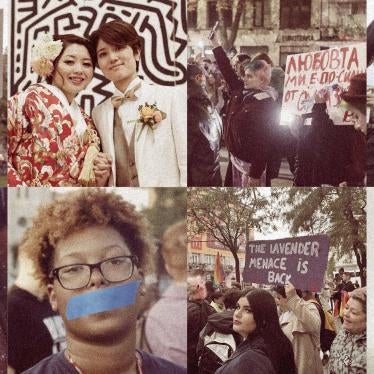The 1995 massacre in Srebrenica occurred because Bosnian Serb leaders, intoxicated by hatred and an illusory sense of omnipotence, lashed out savagely against the country’s Muslim population. But the international community also bears responsibility for the worst crime in Europe since World War Two. After promising protection to the inhabitants of Srebrenica, the United Nations and NATO allowed the “safe area” to fall. That responsibility is compounded by the continuing failure to bring to justice Radovan Karadzic and Ratko Mladic, the two men indicted as the principal architects of the Srebrenica genocide.
The Dutch United Nations Protection Force (UNPROFOR) battalion based in Srebrenica failed to take the military action necessary to save the town. Robust NATO air strikes that could have stopped the Serb onslaught were never authorized, despite repeated requests from Dutch peacekeepers on the ground.
The fall of the Srebrenica safe area was the foreseeable consequence of U.N. and NATO policies on the use of force during the Bosnian conflict. The U.N. Security Council had authorized air strikes by NATO if U.N.-designated “safe areas” in Bosnia – Sarajevo, Bihac, Srebrenica, Tuzla, Zepa, and Gorazde – were attacked. But throughout the war the U.N. adopted a position of “neutrality ” that in practice meant inaction, even when Bosnian Serb forces attacked “safe areas” or the warring parties otherwise violated ceasefire agreements. Key NATO countries—including the United States, France and Britain—conveniently hid behind the U.N. position.
Isolated air strikes in 1994 were too limited in scope and number to deter further offensives. In May 1995, when NATO targeted Serb heavy weapons around Sarajevo in response to continuing attacks against the capital, Serb forces responded by taking hundreds of U.N. peacekeepers hostage. The Bosnian Serb leadership announced that their threats to U.N. soldiers would end only if the international community stopped air strikes. NATO never formally renounced the use of air strikes, but by June 18, 1995, the U.N. hostages had been released.
Serb forces led by General Ratko Mladic and under overall command of Bosnian Serb president Radovan Karadzic began the attack on Srebrenica on July 6. The U.N. command declined to call in NATO air strikes on the positions of the advancing Serbs despite repeated requests by the Dutch battalion in Srebrenica. The four hundred lightly armed Dutch soldiers in and around Srebrenica had neither the authorization nor the capacity to repulse the Serb offensive. The Netherlands later launched an investigation into the shattering failures of that time: but the responsibility was much broader than that. The world simply looked away. The limited NATO air strikes launched on July 11 came too late to have any impact. The rest is tragically well known: the Serbs entered Srebrenica, and in the following week killed between 7,000 and 8,000 Muslim men and boys.
Mladic and Karadzic were indicted for genocide in Srebrenica in 1995. Their continuing freedom, a decade later, is a profound moral failure for NATO and the international community. The number of arrest attempts against both men by NATO peacekeepers can be counted on one hand. Instead of taking the action necessary to bring the men to justice, NATO has instead offered a series of excuses—from ignorance of the men’s whereabouts to concerns over reprisals—to justify its failure. As Human Rights Watch has documented, those excuses are simply not credible. While arresting Mladic is now a matter for Serbia, Karadzic is almost certainly still in Bosnia. His arrest by NATO forces in long overdue.







